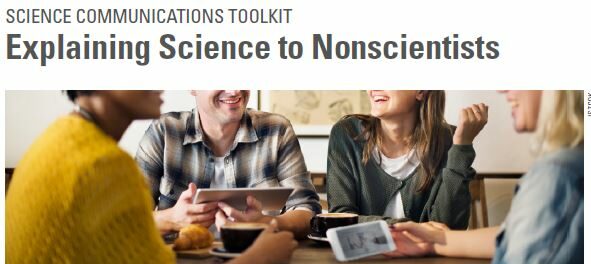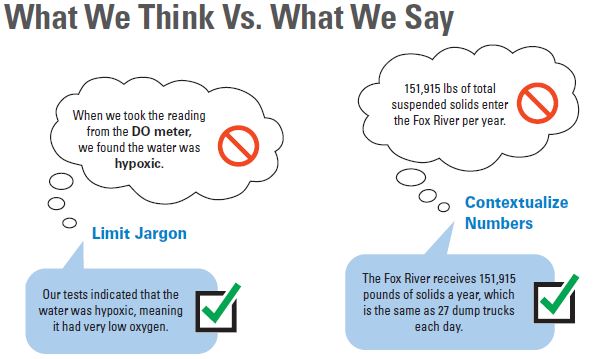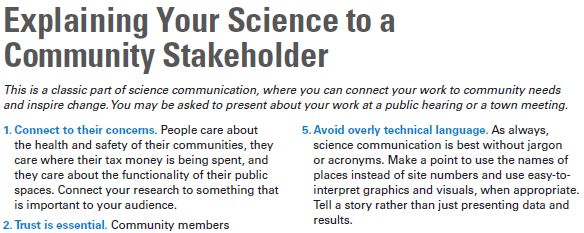
A series of one-page documents to help students and researchers communicate with a variety of audiences.
Science Communications Toolkit
Overview of the Toolkit
The Science Communications Toolkit is a series of twenty, one-page documents to help students and researchers communicate with a variety of audiences. While the stated audience is students and researchers, these communication guidelines can also be useful for communicating with other audiences such as property owners, community/government official, or policy makers.
The Toolkit provides background on communication basics, guidelines for communicating with non-technical audiences, and various methods of communication. These communication guidelines can help users form a communication plan by providing best practices for forming and sharing a message with their target audience.
The Toolkit was produced by UW-Milwaukee’s School of Freshwater Sciences Professional Master’s program and funded by Wisconsin Sea Grant in partnership with the University of Wisconsin-Green Bay in Manitowoc and the Southeastern Wisconsin Watersheds Trust, Inc.
The Science Communications Toolkit is available to download for free.
Quick Reference One-Sheets
Each one-sheet in the Toolkit covers one idea in each of the Toolkit’s three topic areas; background, audience, method. The Toolkit is contains twenty of these sheets. The one-sheet format provides users with a quick reference document that can be used when developing their communication plan.

Background
This topic discusses communication basics that users should understand before building their communication plan; for example, forming a message and developing cultural competency.
 Audience
Audience
This topic explores how to explain science to different types of audiences; for example, community stakeholder.
 Method
Method
This topic identifies common methods for communicating with the audiences identified in the “Audience” topic; for example, interviews and social media tips.
Start exploring the Science Communications Toolkit




